| |
Recently, in our garden we had some unexpected, but not your typical (or necessarily wanted) guests.
A small swarm of honey bees had taken over the face of a rock and were buzzing to and from it. Clearly they had made themselves comfortable.
House Hunting
While finding the best solution to preserve the bees, but at the same time have them safely removed, I learned that swarms of honey bees sometimes migrate and settle temporarily while scouting for an ideal spot to build a hive.
One indication that the bees were likely migratory was that the rock they settled on is close to the ground and has a flat surface with no deep crevices - an unlikely place for bees to settle.
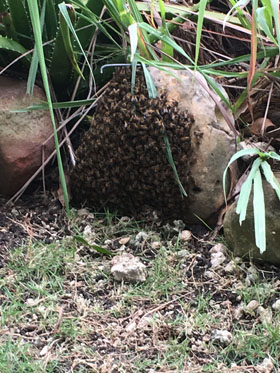
The information I learned, prompted me to further research these insects and the causes of their migration.
Welcome to the complicated world of migrating honey bees (in a nutshell)
I discovered that a honey bee colony is an extremely intricate, meticulous and sophisticated network and the bees which make up the colony have very specific functions in contributing to the operation of their hive.
The migration of honey bees is known as
|
|
swarming and one of the main reasons this occurs is when a hive becomes over-populated. Furthermore, swarming has been described as Nature's way of expanding the honey bee population.
It's all in the communication
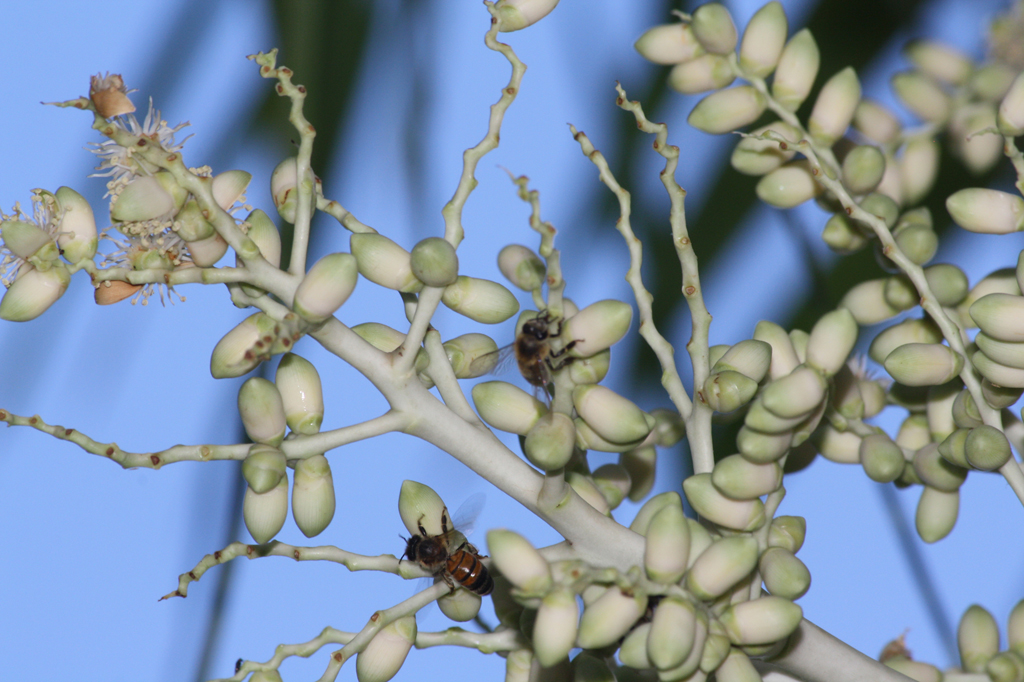
One of the ways in which honey bees communicate with each other is through the transmission of a complex chemical substance known as "pheromones."
There are different types of pheromones released and it is imperative for the network of bees to receive the "signals" or communication sent through the chemical in order to maintain structure of the
hive and colony.
The Queen Bee and the pheromones she releases are greatly essential to the survival of the colony.
However, there are instances when her pheromones are not received by all of the hive, such as if the colony expands, or when the substance is not being produced strongly enough. In such cases, preparation for a new Queen Bee as well as a new off-shoot colony will begin.
There can only be one Queen Bee in a colony and before the emergence of the new Queen, the elder Queen Bee will leave the hive with some of the bees, in order to form a new one.
While in search of a new location to form another hive, honey bees settle temporarily. Also, in anticipation of lack of food, honey bees fill themselves with nectar, with the exception of the Queen Bee which is the weakest as well as the heaviest flyer and unlike the other bees, does not consume any nectar in preparation for their migration.
Honey bees tend not to be overly aggressive during the time of swarming, but are still |
|
protective of the Queen Bee and will attack if they feel threatened.
Scout Bees have the task of finding an appropriate location to establish the new hive. When the Scout Bees find various suitable areas for the colony to permanently set up a new nest, they communicate their findings to the other bees by dancing (another way in which bees communicate). Each Scout Bee will vie for its location to be chosen. Based on the information received from the Scout Bees, the swarm decides on the most appropriate place to build the new hive.
Time to move on...
Sure enough, within a few days of discovery, the swarm of bees in my garden was gone and surprisingly during their stay had even survived a torrential rainfall.
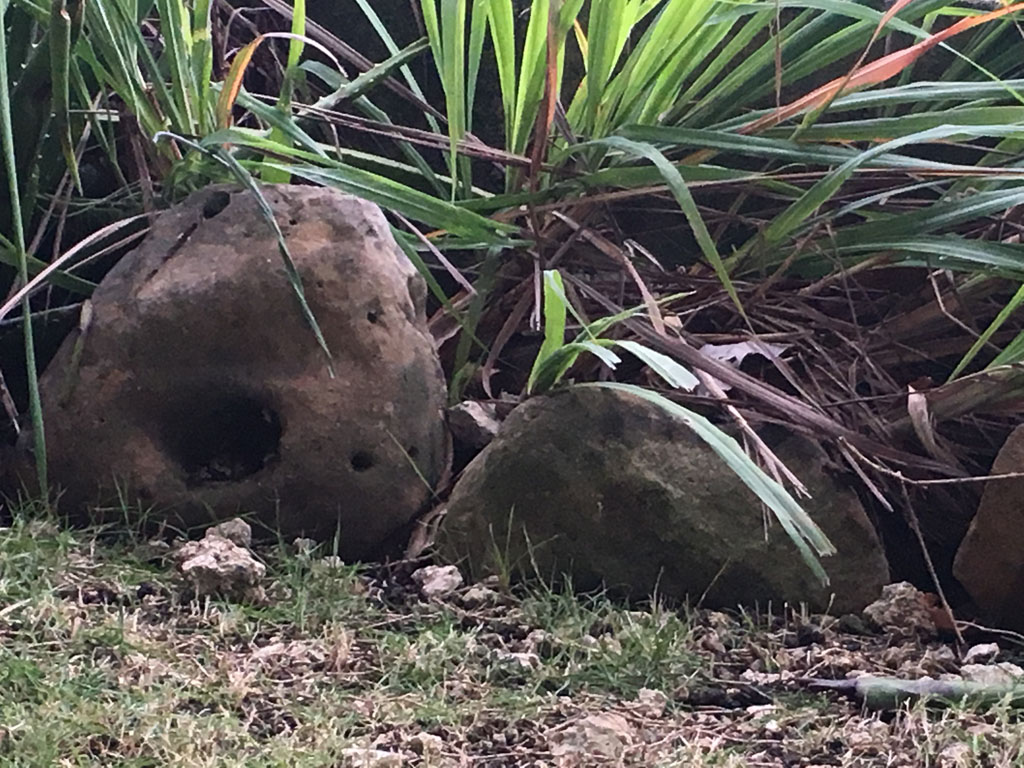
Although the swarm in my garden was small, it is said that bee colony can have thousands of bees, making the swarm of migratory bees dauntingly large.
It is surprising that what I saw as just a swarm of bees in my garden, actually came from a highly complex, yet organised network.
Even though the bees were a bit of a concern at first, researching their behaviour opened up a new world of information on their species and the information I found on the workings of a bee colony was fascinating.
While bees may appear to be just another bothersome insect, my research also showed their contribution and the vital role they play in pollination, which in turn extends to our environment and ecosystem.
It is truly amazing how such tiny creatures have such high importance in sustaining our planet. |
|
|
| |
|
| September 2016 |
Beyond the Local Patch: A Norwegian Adventure |
|
|
+ TOP |
+ CONTENTS |
|
| |
In September, we traded the beautiful blue waters, soft white sand and palm trees for majestic mountains, stunning waterfalls and breath-taking waterways.
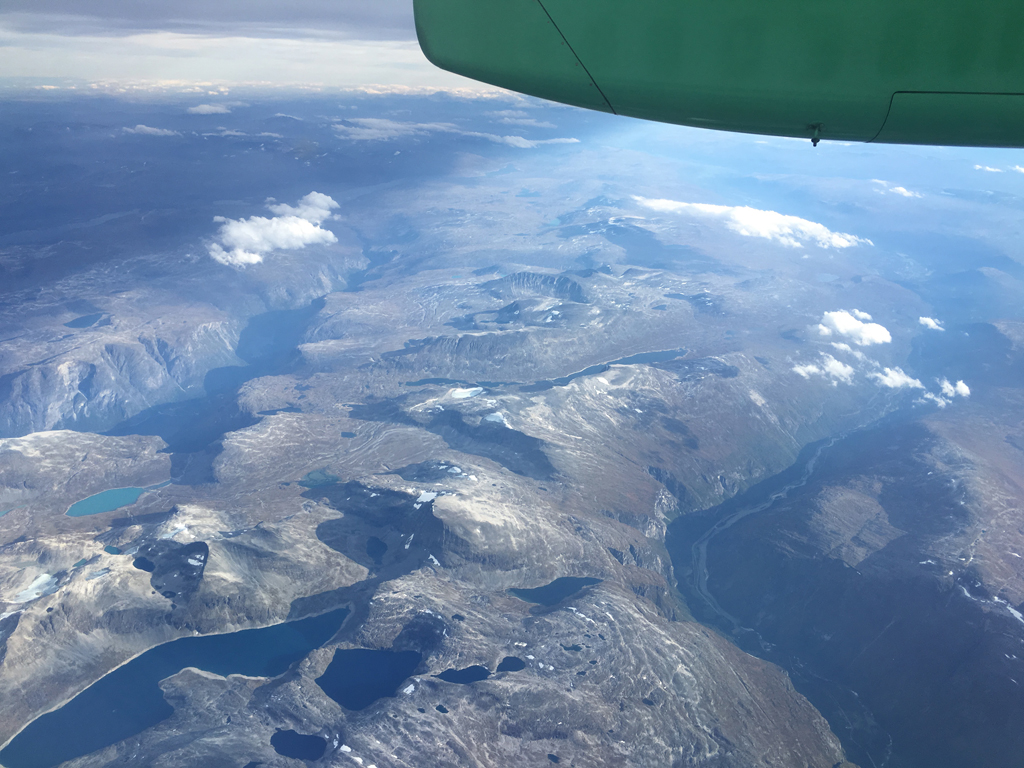
From Beaches to Fjords
While flying overhead of Norway, the vast differences in landscape were already clear: Unlike Barbados which is flat and has a relatively continuous coastline, Norway's rugged western coast is made up of winding watercourses and dotted with islands.
Bergen: The gateway to the fjords
When we arrived in Bergen, it was still summer. However, while travelling to smaller towns outside of the city, signs of autumn were beginning to show on the landscape, as changing leaves were evident in some areas.
In Bergen we travelled to the top Mount Fløyen, where we trekked through the cool woods and saw some domesticated goats which were quite friendly. However, when it came to feeding time, these animals quickly forgot their new friends and in a flash, displayed their agility and skill by quickly running over the edge of the slippery, rocky and muddy mountain.
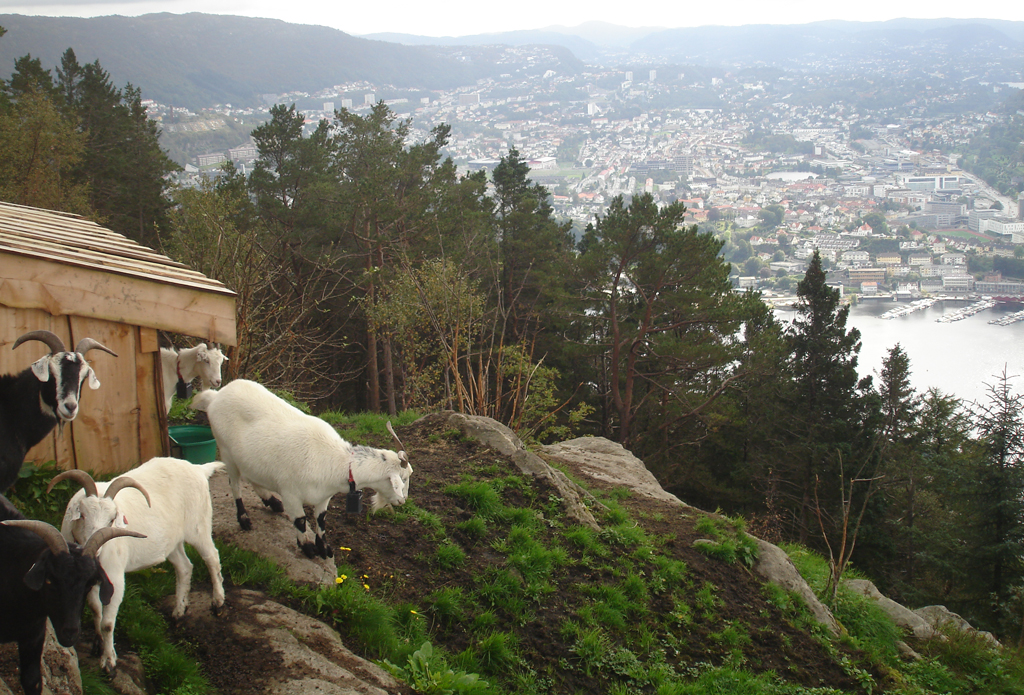
If rocks could speak
We had the opportunity to experience first-hand Norway's incredible mountains and fjords. From great heights, beautiful waterfalls gracefully and skilfully made their way down the sides of steep cliffs.
Research indicates that during the last Ice Age, which occurred thousands of years ago, Norway's geology and landscape was greatly impacted by glacial activity. Norway's famous fjords are a result of the |
|
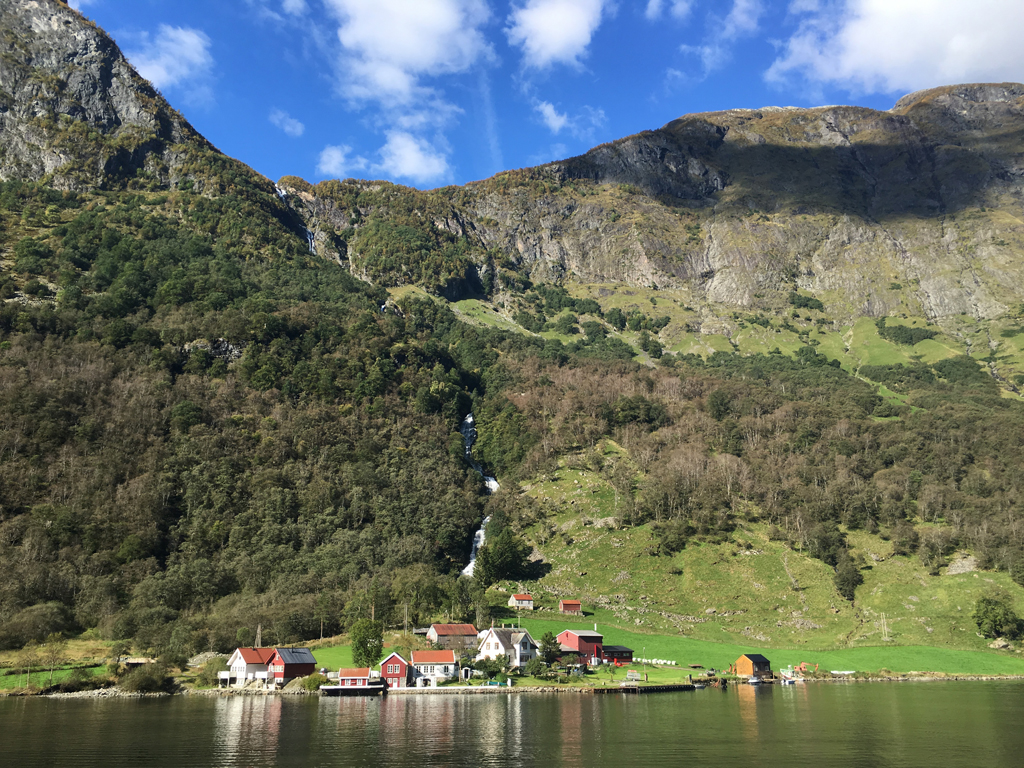
retreating glaciers cutting deep "U-shaped
valleys" on the Earth's surface, below sea-level. This resulted the development of long, deep and narrow sea-water channels which run inland, with steep, elevated rock formations on either side.
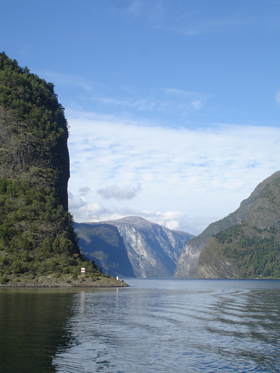
In Norway the fjords are mostly located in the western region, but they are also found in other countries, such as in Iceland, Greenland, the United States of America (Alaska), Chile and New Zealand.
TromsØ: On top of the world!
Unlike in Bergen where it was summer and the signs of fall were just beginning to show, in TromsØ we arrived towards the middle-end of autumn.
Although TromsØ is a small city, it has much to offer for Nature-lovers.
Located in the Arctic Circle, in the north of Norway (Troms county), TromsØ and the surrounding areas also offer interesting landscapes, rock formations, valleys, fjords and many islands of various sizes. Due to the time of year which we travelled, we did not see much wildlife. However, in Arctic Norway has a variety of wildlife including reindeer, elk, moose, seals, whales and a variety of birds which can be sighted depending on the season. Of course, there are many varieties of fish which also play a role in the Norwegian diet. |
|
One of my favourite spots in TromsØ was Telegrafbukta Beach; a manmade beach away from the main city. In the tranquillity of the beautiful morning, we walked through the autumn leaves and watched the mist roll over the sea, while at the same time spotted patches of snow on the distant mountains. It was as though four of the seasons were coming together in harmony.
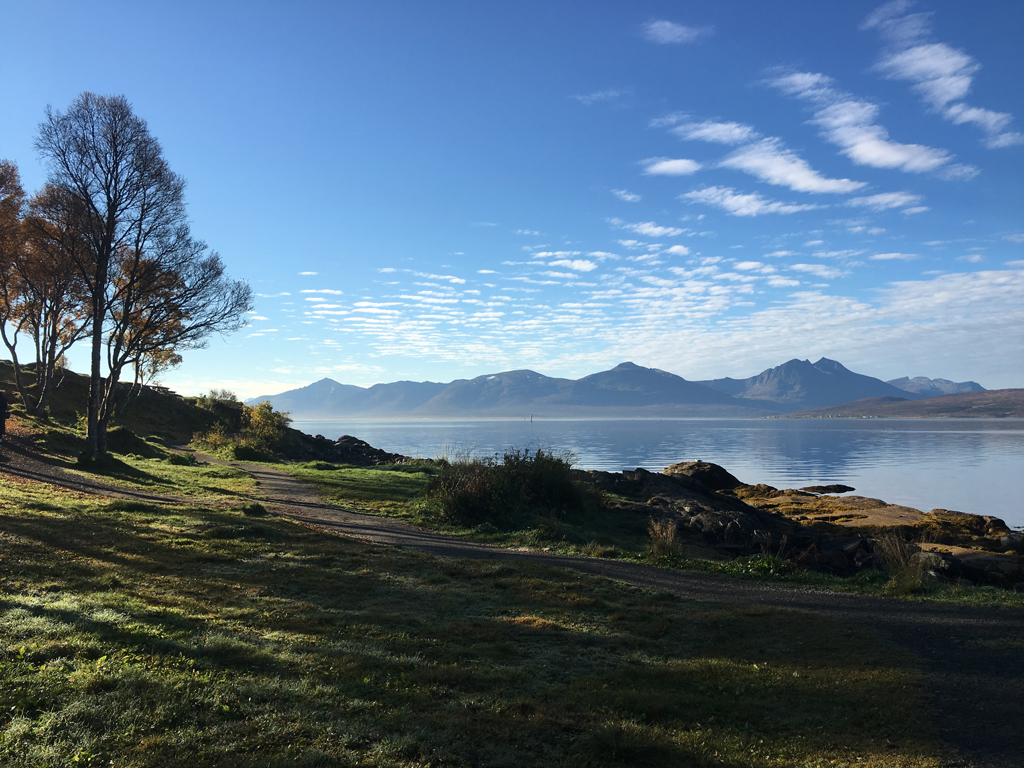
Even though it was a warm, bright day, it did not escape our attention that we were in the Arctic Circle.
In this rugged and isolated landscape, we were disconnected from the usual hustle-bustle of life and a daily routine. On SammarØy Island we faced the vast ocean in the direction of the North Pole (some 3'000 miles away) and one could sense the vast greatness of Nature.
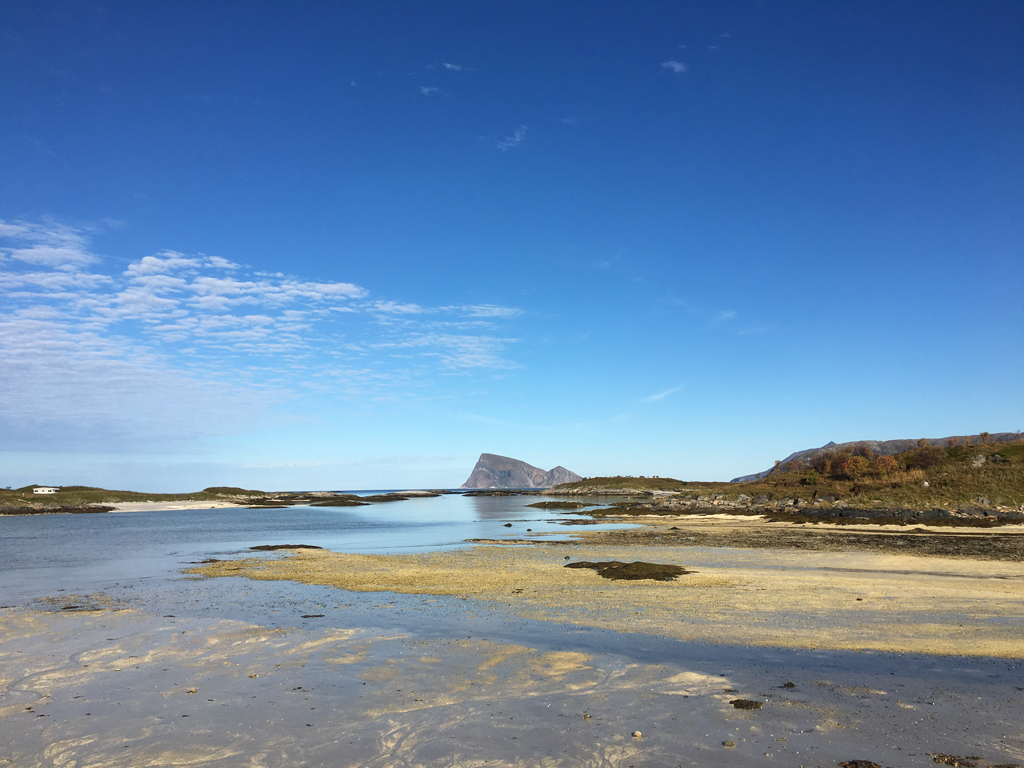
Until next time...
When visiting Norway, it does not take long to realise that Nature and the outdoors is valued and incorporated into everyday life.
In addition, understanding the history and evolution of the landscape further enriches an already beautiful experience. 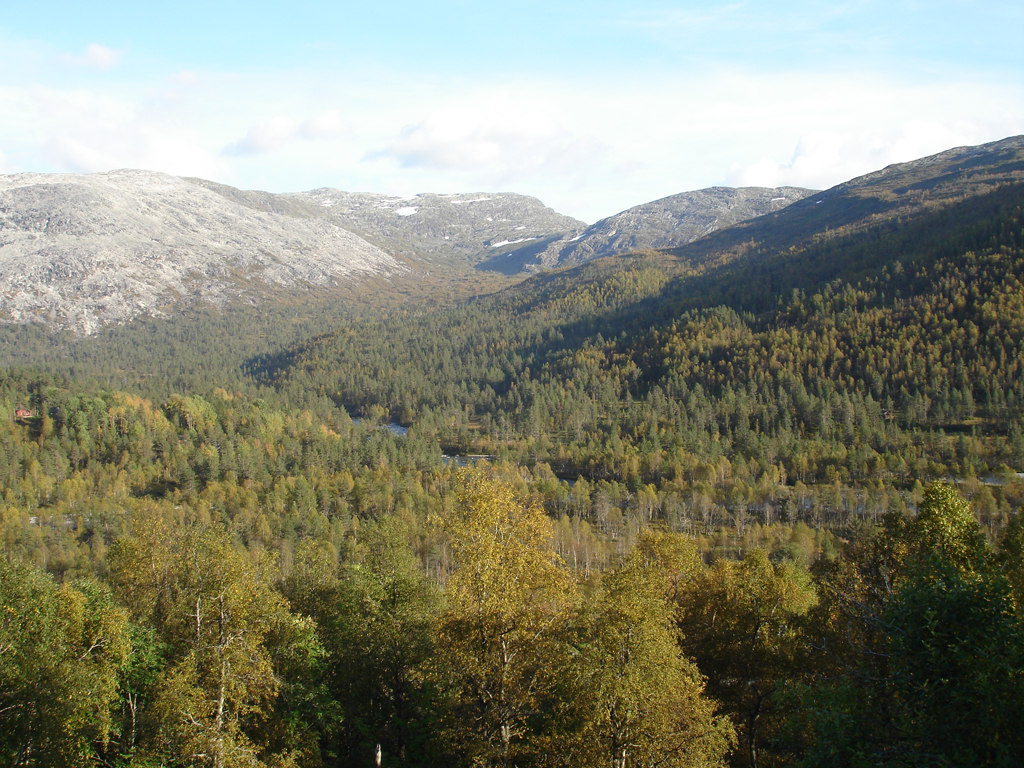
|
|
|
| |
Unless in a related field, when one thinks of work, wildlife is not usually the first thing that comes to mind.
However, it recently occurred to me that on a daily basis, I am often in the presence of pigeons: They sit, pace and build nests in and around the high spaces of the buildings. These birds occupy my workplace more than I do.
Quarantine
For a few weeks, I had noticed a pigeon with unusual characteristics frequenting my window sill: boil like formations around its eyes and face, heavy breathing, sluggish movements, tiredness and ruffled feathers more resembling slick bristles. It was clear that this bird had an illness and sought refuge on my window sill.
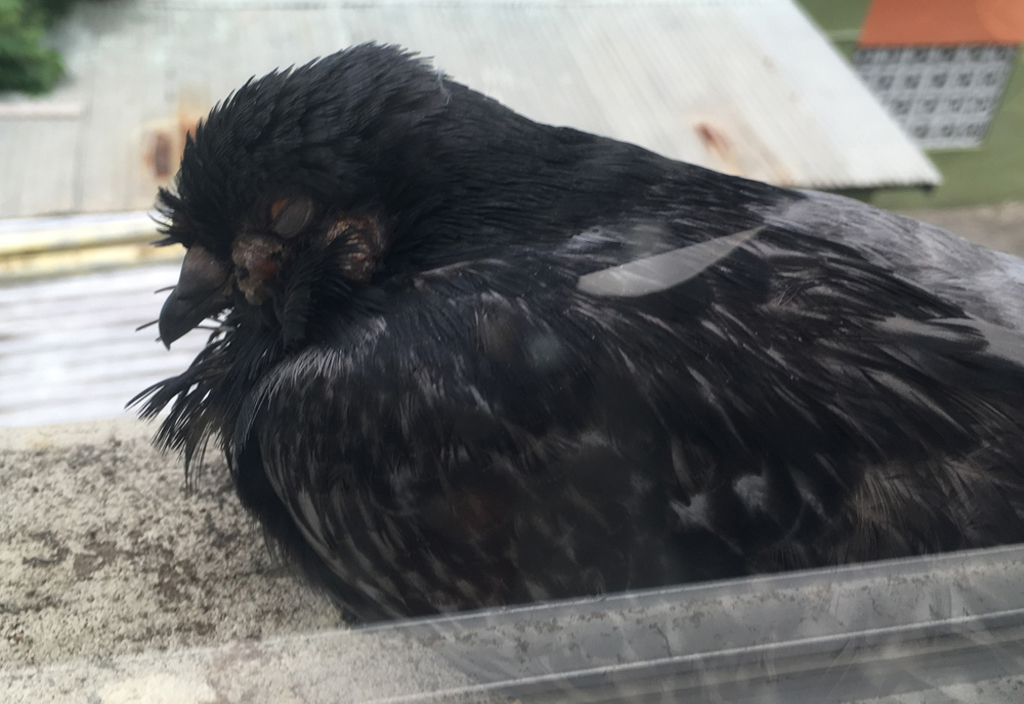
Initially, I chalked it up to an isolated case. However, one morning I found three additional pigeons on my window sill which were beginning to show similar symptoms as the first bird.
Pigeon Pox
Some quick research on the birds' symptoms showed that the disease which seems to fit the bill (no pun intended) is one known as "pigeon pox" which is a strand of "avian pox" and is contagious among birds.
|
|
Further, general research on the virus indicates the following:
There are two strains of this particular illness:
1. The dry strain which is not fatal to the birds.
2. The wet strain which is more severe and is fatal to the birds.
The diagnosis...
From the type of symptoms that the birds are showing, it appears that they are carrying a mild case of dry pigeon pox.
One distinction is shown through the formation of the bumps (known as lesions). The pigeons have developed external lesions which are drier in nature and form on the areas of the birds' bodies which contain the least amount of feathers or no feathers at all, such as on the legs and feet, the face, beaks and around the eyes.
With the wet form of the illness the lesions form internally and are moist, yellow in colour and are described are having a "cheesy" appearance. The lesions affect the birds' internal organs and some of their vital parts, such as the mucus membrane and the lungs.
Another distinct symptom of the wet strand of pigeon pox is that the birds experience considerable weight loss. From my observation, while the birds seem uncomfortable and inactive, the loss of weight is not great.
Transmission
It would appear that the virus is highly contagious, due to the direct and indirect methods in which it can be transmitted, such as through open wounds, saliva exchange and even aerially. |
|
More specifically, the infection is transmitted in three ways:
1. Through insects, with mosquitoes being a common culprit. When an insect bites the infected bird, it can further spread the disease to other birds it will feed on.
As it is currently rainy season in Barbados, we have been experiencing an increase in insects, including mosquitoes and transmission through insects would not be uncommon.
2. It is said that the virus can also also be spread amongst the birds themselves, when uninfected birds come in direct contact with infected birds. Furthermore, research indicates that the dried, scabbed lesions which the birds shed, still carry the disease.
3. Another method in which the disease can spread is through contamination. This varies, as the virus can be transmitted through simple habits which birds have, such as pecking at the same fruit, drinking the same water or bathing in the same puddles and baths as infected birds.
Speedy Recovery
While researching the diseases which affect birds, it is interesting to note that although the disease does not affect humans, I realised there is also much in common with the transmission and symptoms experienced in human ailments.
When observing the vibrancy of nature, it is easy to forget that like humans, wildlife also has diseases and ailments which affect their health.
These birds quietly accept their fate and allow nature to take its course.
As I continue to observe these birds and learn more about pigeon pox, I wish them a speedy and a safe recovery. |
|
|
| |
|
| April 2016 |
Beyond the Local Patch: Regents Park, London, England |
|
|
+ TOP |
+ CONTENTS |
|
| |
One of my favourite things to do when travelling is to explore the landscape, scenery and wildlife which other countries have to offer.
While in London, England earlier this year, my trip would have not be completed if I did not visit one of my favourite parks: Regents Park. Furthermore, it would not surprise me if there are more species of birds in Regents Park than there are in all of Barbados!
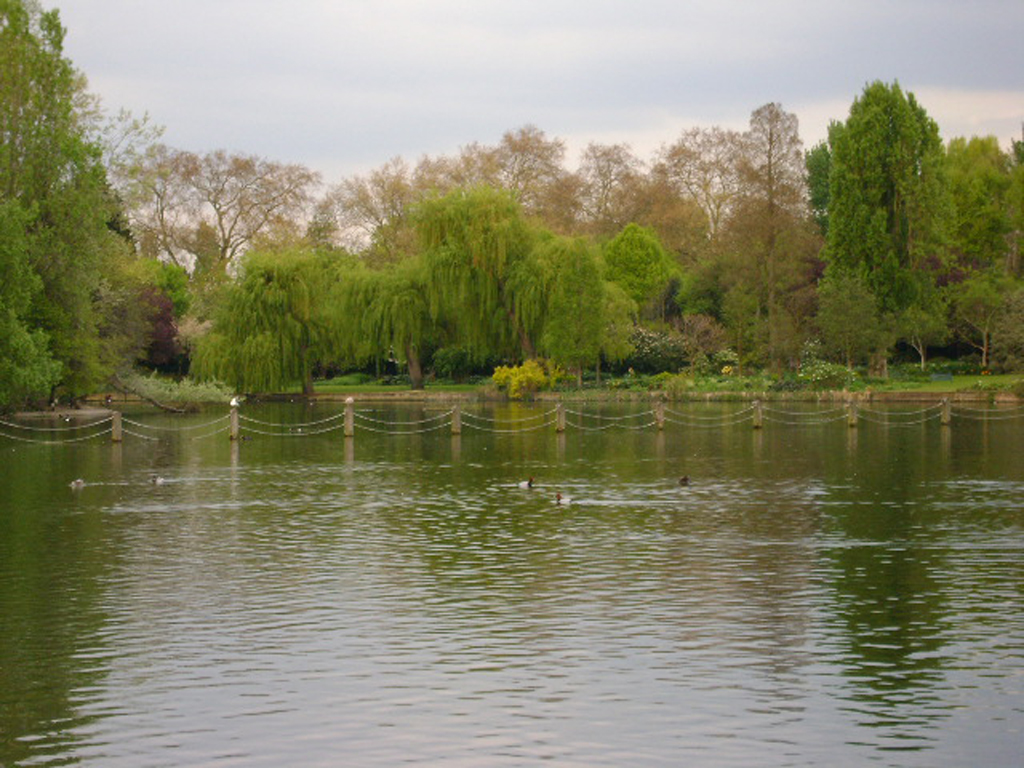
Although a brief visit, I was fortunate to observe the behaviour of some interesting birds.
In the chilly weather of spring, when we could feel a pinch of cold in the air, we watched in admiration the ducks, swans and other birds, as they swam and dived under the water in search for food. We wished that we had their insulation.
Beware: Construction Site
On a cold day, in the late evening, we were pleasantly surprised to come across a pair of black swans building a nest. Their bright red beaks stood out against their charcoal plumage.
It appeared as though they were not in a mood for visitors, as one of them would |
|
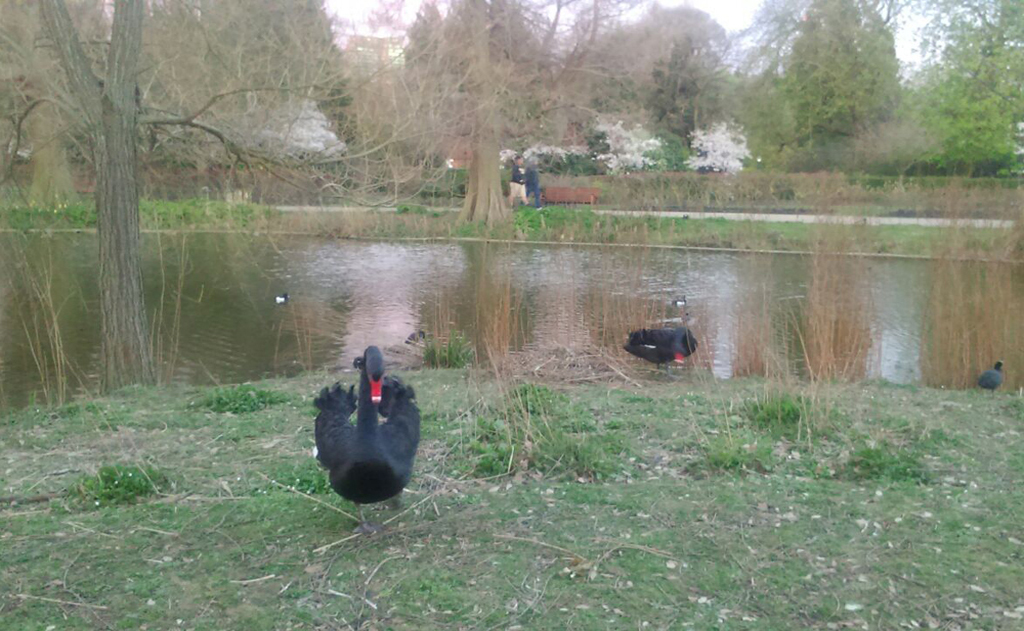
move aggressively towards inquisitive onlookers who got too close for comfort (such as ourselves).
Research on the species indicates that black swans were originally discovered in Australia.
It is also stated that they are mainly herbivores, feeding on plants and algae.
Furthermore, they are said to be generally monogamous. However, an interesting point of discovery that came up, is that about a quarter of black swans (mainly males) exhibit homosexual behaviour. In order to breed, they would mate with a female and then force her away, or they would invade and take over another pair's nest, claiming and raising the cygnets as their own.
Although it was a very brief and unexpected encounter, this was my first time spotting a pair of black swans and it was certainly a great opportunity.
I'd like to place my order please!
On this trip, I was reminded that not all birds are shy, especially when it comes to food.
On another evening, while walking by the lake side, I was pursued by a very persistent |
|
waterfowl... and I believe I understand why.
My guess is that as many people bring feed for the birds in similar bags, the bird made the association between the bag I was carrying and assumed that I had food, which I was refusing to share.
Furthermore, by pursuing me it was sending me a non-verbal message that it wanted to see what was in my bag.
On closer observation of their behaviours, it is not hard to see that in addition to their sharp sense of instinct and perception, birds are indeed extremely intelligent.
The aptitude which the birds I encountered exhibited, reminds me of the birds in my Local Patch, such as the blackbirds I have previously posted on. In the way they know how, the bolder birds try to and find basic methods to strategize and find ways communicate not only with their own kind and other forms of wildlife, but with humans as well.
I believe that if I am ever called a "bird brain" I will take it as a compliment!
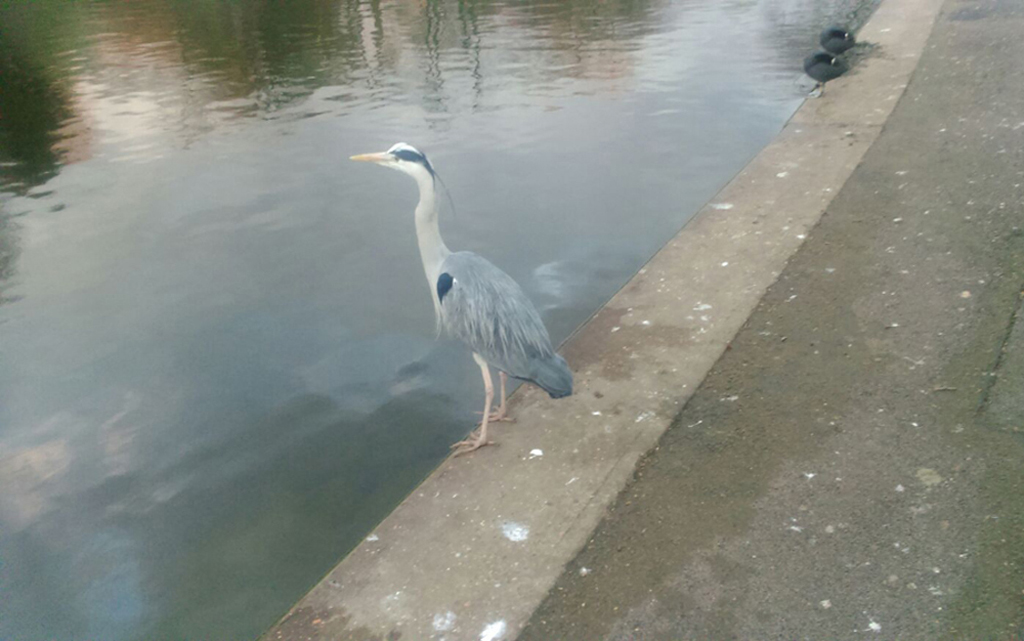
Related Article:
August 2015: A Tribute to my Dad
|
|
|
| |
|
| April 2016 |
Beyond the Local Patch: Kew Gardens, London, England |
|
|
+ TOP |
+ CONTENTS |
|
|